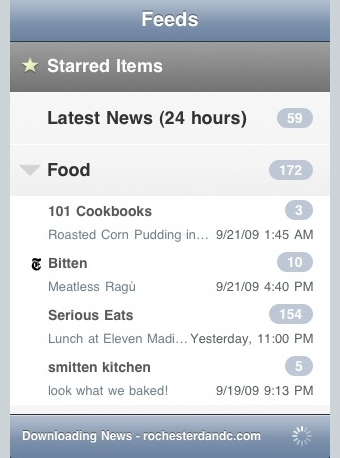

- #GOOGLE READER MOBILE IPHONE FOR ANDROID#
- #GOOGLE READER MOBILE IPHONE ANDROID#
- #GOOGLE READER MOBILE IPHONE SOFTWARE#
You will hear a camera shutter sound, then, a few seconds later, the text will begin to speak.
#GOOGLE READER MOBILE IPHONE SOFTWARE#
The app uses the latest and most advanced text recognition, and it includes this software within the app.To pique your interest, below are a few of the KNFB Reader’s blindness-aware features: Read a review of the KNFB reader for iOS in the November 2014 issue of AccessWorld to learn more. Technology changes quickly- check with the developer to make sure the app works with your specific device. KNFB works on iPhone 4s through 6s Plus, iPod touch 5 and 6, and on the iPadAir2.
#GOOGLE READER MOBILE IPHONE ANDROID#
KNFB works on a range of Android devices, depending on processing speed and camera quality. The Symbian operating system has subsequently languished, but in the early fall of 2014 and to much fanfare, the company released a new version of the KNFB Reader for iOS This software package enabled users of certain Nokia feature phones running the Symbian operating system to snap a photo of a printed page, have it turned into text, and then have that text read aloud. Several years back, K-NFB Reading Technology Inc released a product called the KNFB Reader.

Needless to say, these are not skills many individuals with visual impairments excel at. You have to have the text lined up perfectly square, and hold your phone absolutely still and at just the right distance from the page.

These apps tend to be more than a little finicky, however. Other apps, such as TextGrabber and Prizmo have been optimized to perform these tasks exclusively.
#GOOGLE READER MOBILE IPHONE FOR ANDROID#
We mentioned earlier in this guide that Google Goggles and Talking Goggles for Android and iOS can identify and recognize some text. Smartphones also include a hardware camera, which means they have everything they need to become all-in-one “Reading Machines.” These days smartphones are smart enough to take over the processor-intensive task of turning images of text into text that can be voiced (for more on optical character recognition, see the Using Technology for Reading Guide).


 0 kommentar(er)
0 kommentar(er)
